The Seri Muka is one of the dishes in the Menu Amore d’Oriente for the section “Building the menu” dedicated to Valentine’s Day, although the celebration of love between couples has been completely banned for cultural and religious reasons (64% of the population is Islamic) because it is considered a Western commercial holiday.
It is a kuih Nyonya.
Kuih (Indonesian: kue; derived from Hokkien and Teochew kueh – 粿) are small-sized snacks or desserts commonly found in Southeast Asia and China.
It is a broad term that can include items that we would define as cakes, cookies, puddings, or pastries and are usually made with rice and/or glutinous rice.
They are an integral part of Malaysian, Indonesian, Bruneian, and Singaporean festivities such as Hari Raya and Chinese New Year.
Many kuih are sweet, but some are savory.
In almost all Malaysian kuih, the most common flavoring ingredients are grated coconut, coconut cream, pandan leaves, and gula melaka (palm sugar, fresh or aged).
They are lactose-free and traditionally accompany kopi, coffee with milk typical of the peninsular state of Penang; or black tea, in the tarik version with condensed milk or limau with lime juice.
Nyonya kuih (by the Peranakan*) are sometimes represented as distinct from Malaysian and Indonesian kuih.
The Seri Muka is a two-layer kuih with steamed glutinous rice forming the lower half and a green custard layer made with pandan juice.
Coconut milk is a key ingredient in the preparation.
In 2009, the Malaysian National Heritage Department declared Seri Muka as one of the 100 Malaysian cultural heritage foods and beverages.
Being a type of steamed cake, I tried to prepare it with Magic Cooker, the patented 6-hole stainless steel lid that allows quick steam cooking.
You can purchase it on the website indicated below.
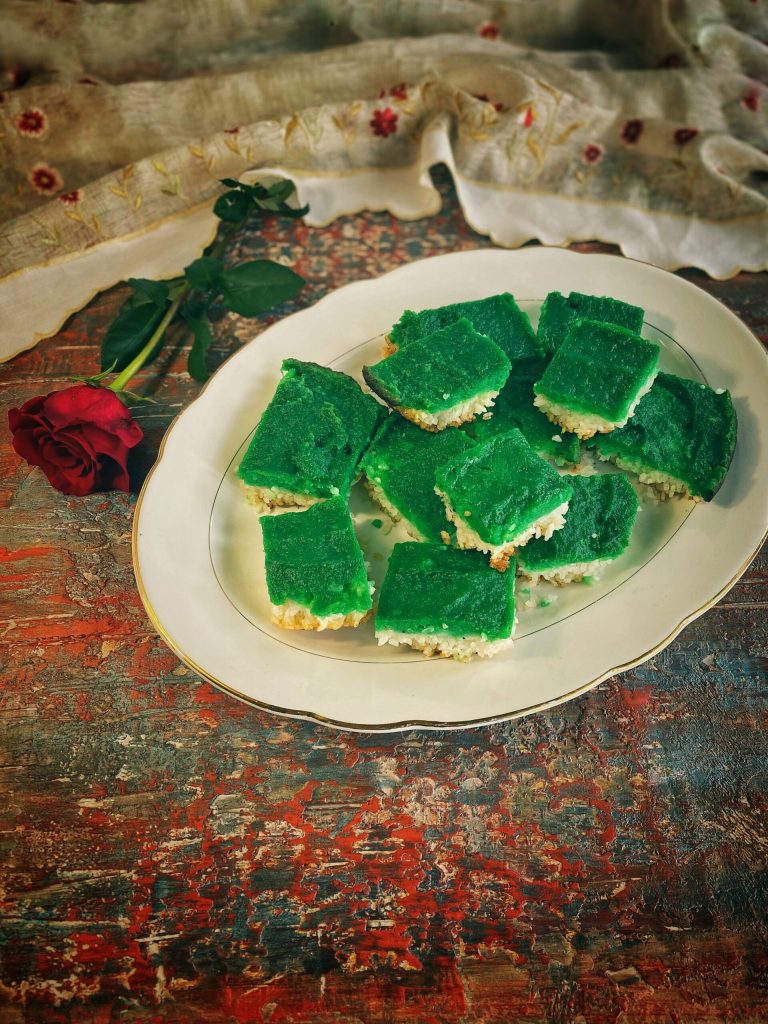
- Difficulty: Medium
- Cost: Economical
- Portions: 4 People
- Cooking methods: Steaming
- Cuisine: Malaysian
- Seasonality: All Seasons
Ingredients
- 14 oz glutinous rice
- 1.5 cups coconut milk
- 1 pinch salt
- 5 fl oz pandan juice (or 10 pandan leaves)
- 3 tbsp glutinous rice flour (or rice flour)
- 2 tbsp rice starch (or corn starch)
- 5 oz sugar
- 3 eggs
Tools
- 1 Steamer
Steps
Soak the rice for about 1 hour.
Mix the rice with 150 ml of coconut milk, 100 ml of water, a pinch of salt.
For the custard: mix the pandan juice (10 blended leaves with 200 ml of water), with sugar, 200 ml of coconut milk, rice flour, starch, and eggs.
Cook for about 10/15 minutes. Strain.
For cooking with Magic Cooker: distribute the mixture in the lightly oiled pan.
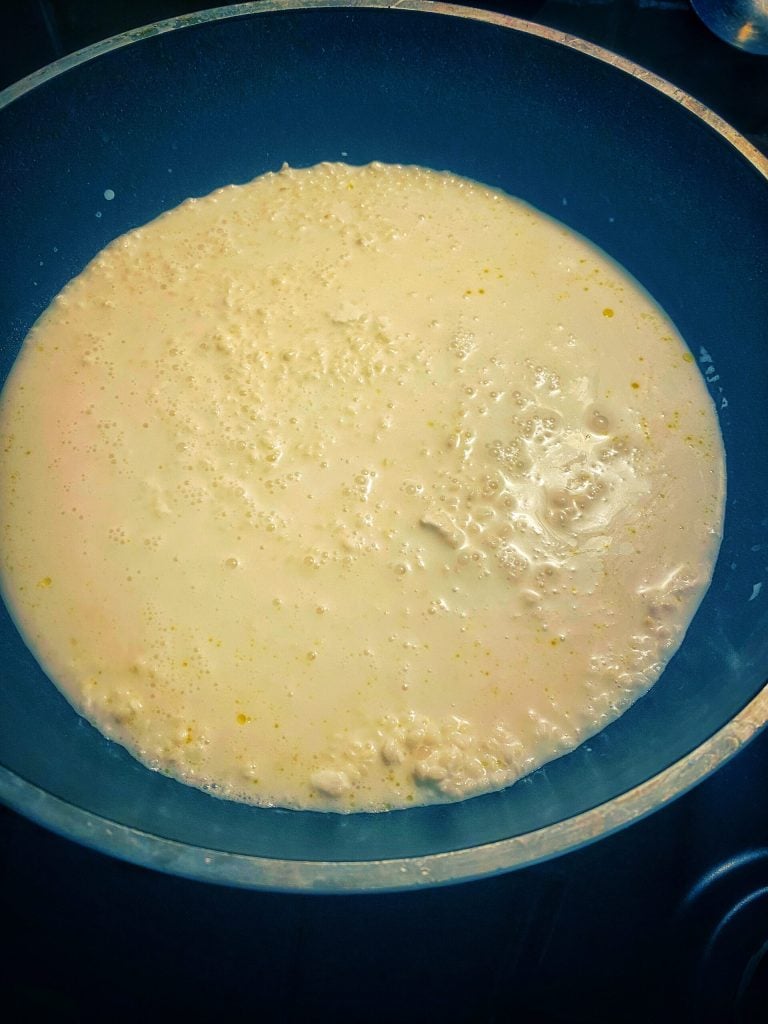
Cover with the lid and cook on high flame for 10 minutes, and another 10 minutes on low flame.
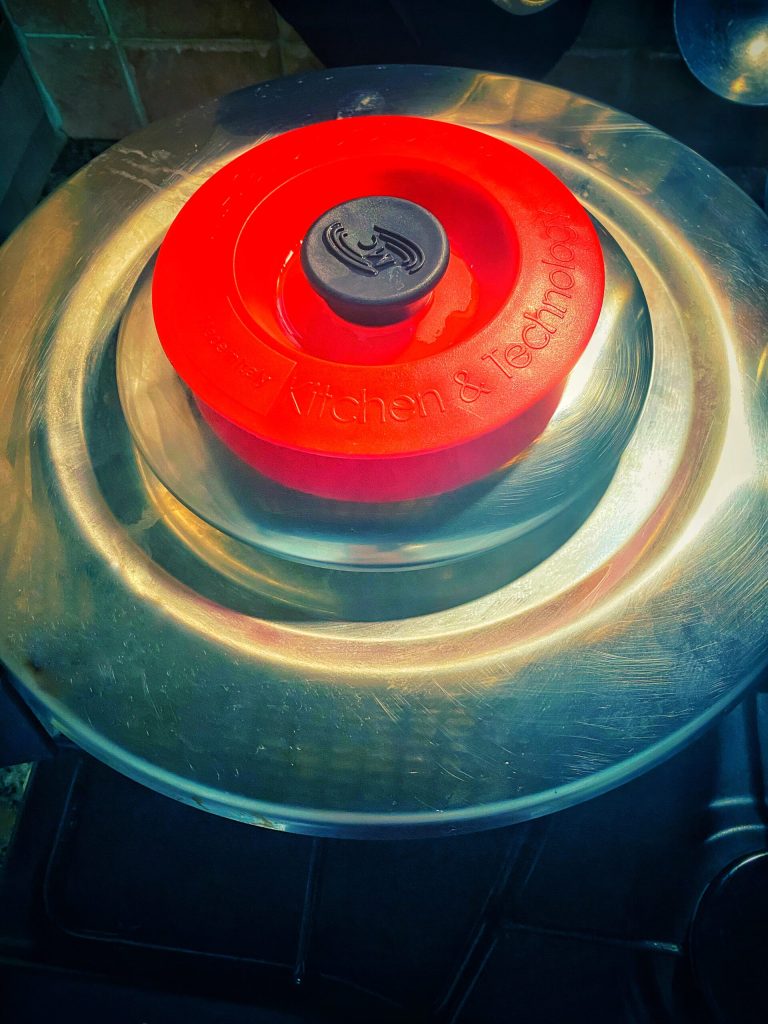
Spread the pandan custard over the rice.
Cover and cook on medium flame for 20 minutes.
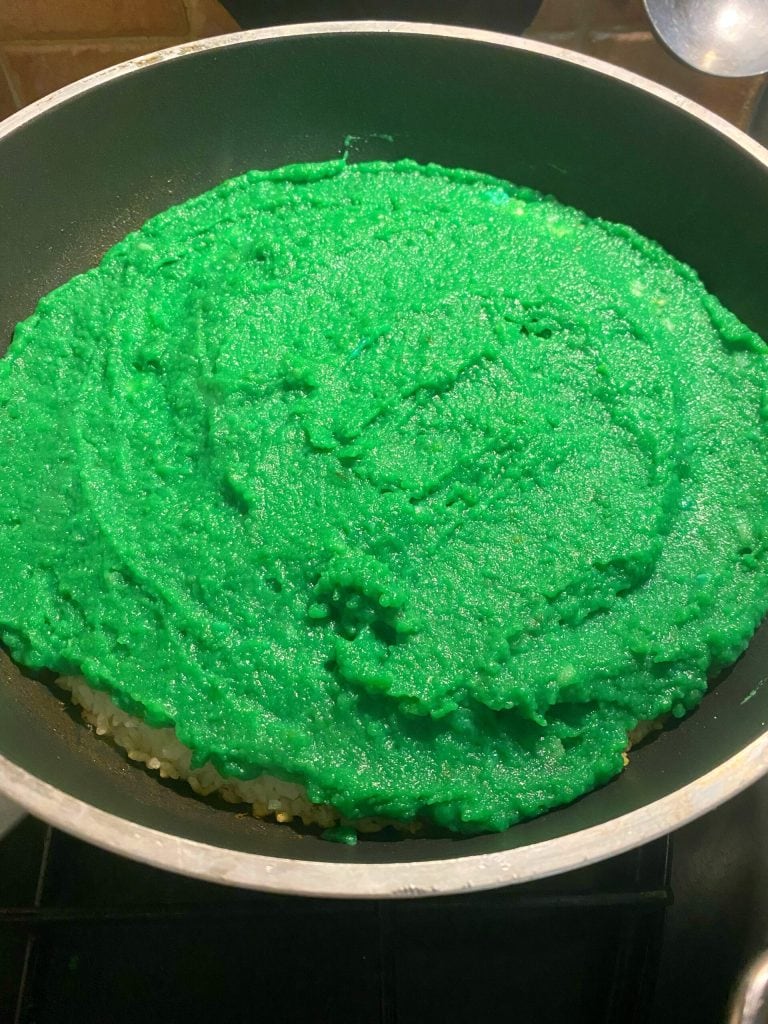
For classic steaming: distribute the rice mixture in a tray, steam covered for 20 minutes on high flame.
After spreading the custard, steam over medium flame for another 30 minutes.
Let it cool and cut into diamonds or rectangles.
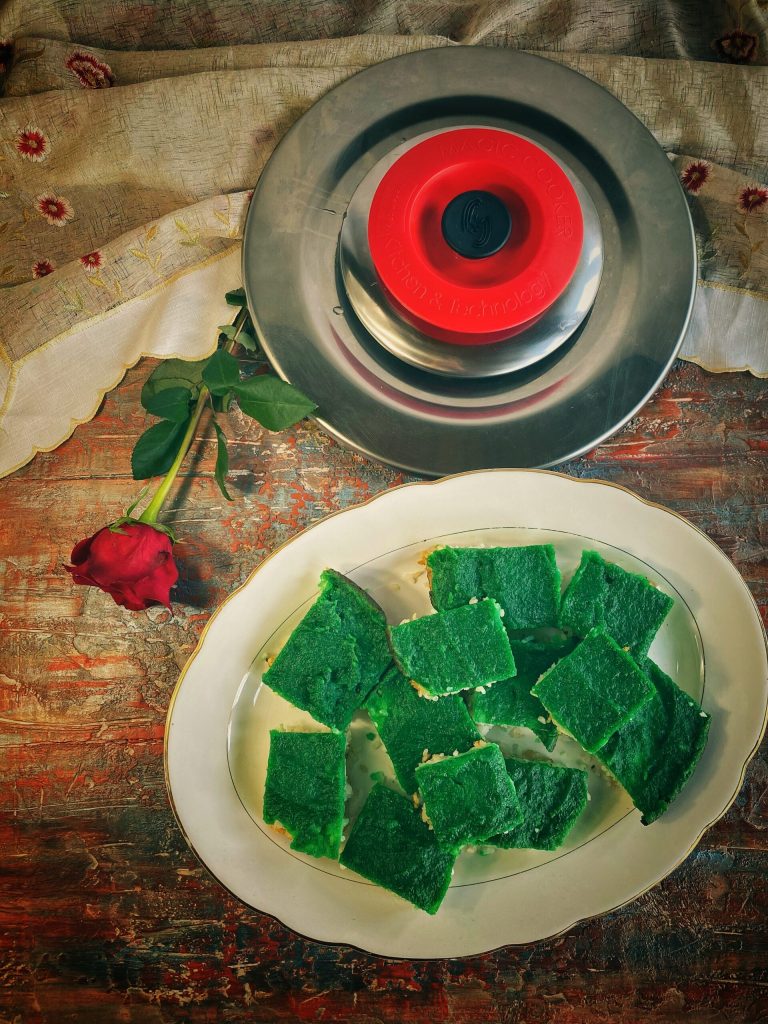
FAQ (Questions and Answers)
How are Kuih called in the East?
The term kuih is widely used in Malaysia, Brunei, and Singapore, kueh is used in Singapore and Indonesia, kue is used only in Indonesia, all three refer to sweet or savory desserts.
In China, where the term originates, kueh or koé (粿) in Min Nan languages (known as guǒ in Mandarin) refers to snacks that are typically made of rice, but can occasionally be made with other grains such as wheat.
Similar snacks are found throughout Southeast Asia, including Burmese mont, Filipino kakanin, Thai khanom, and Vietnamese bánh.
For example, the colorful steamed kue lapis and the rich kuih bingka ubi are also available in Myanmar, Thailand, and Vietnam.
In the northern states of Perlis, Kedah, Perak, and Kelantan, kuih (kuih-muih in Malay) are usually sweet.
In the southeastern peninsular states of Negeri Sembilan, Melaka, and Selangor, savory ones can be found.The term kuih is widely used in Malaysia, Brunei, and Singapore, kueh is used in Singapore and Indonesia, kue is used only in Indonesia, all three refer to sweet or savory desserts.
In China, where the term originates, kueh or koé (粿) in Min Nan languages (known as guǒ in Mandarin) refers to snacks that are typically made of rice, but can occasionally be made with other grains such as wheat.
Similar snacks are found throughout Southeast Asia, including Burmese mont, Filipino kakanin, Thai khanom, and Vietnamese bánh.
For example, the colorful steamed kue lapis and the rich kuih bingka ubi are also available in Myanmar, Thailand, and Vietnam.
In the northern states of Perlis, Kedah, Perak, and Kelantan, kuih (kuih-muih in Malay) are usually sweet.
In the southeastern peninsular states of Negeri Sembilan, Melaka, and Selangor, savory ones can be found.* Who are the Peranakan?
The Peranakan, Straits Chinese, or Baba-Nyonya are the descendants of the early Chinese immigrants settled in the British Straits Colonies of Malacca, Penang, and Singapore.
Baba (峇峇) means “father” in Chinese idiom and designates men, while Nyonya derives from the Portuguese donha, “lady”, and designates women.The Peranakan, Straits Chinese, or Baba-Nyonya are the descendants of the early Chinese immigrants settled in the British Straits Colonies of Malacca, Penang, and Singapore.
Baba (峇峇) means “father” in Chinese idiom and designates men, while Nyonya derives from the Portuguese donha, “lady”, and designates women.What is pandan?
The Pandanus amaryllifolius is found in India and Southeast Asia, but the leaves are also imported abroad in various forms.
It is difficult to find them fresh, but easy to find them in the form of pastes, extracts, or even powders and syrups.The Pandanus amaryllifolius is found in India and Southeast Asia, but the leaves are also imported abroad in various forms.
It is difficult to find them fresh, but easy to find them in the form of pastes, extracts, or even powders and syrups.

